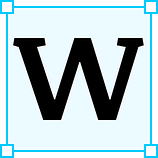My Google UX internship experience with COVID-19
Tips and tricks to balance emotional well-being within a high-stress, fast-moving environment.
 When I contracted COVID-19 before my UX writer internship on the Material Design team at Google, I panicked. Body aches, persistent coughs, chills, and later, partial facial paralysis came part and parcel with the viral infection. Under normal circumstances, I would have spent twelve weeks at the New York City office location, enjoying free food, and the massive outdoor terraces overlooking Chelsea. However, when the internship went virtual, I learned coping skills to balance efficiency with my physical and emotional well-being.
When I contracted COVID-19 before my UX writer internship on the Material Design team at Google, I panicked. Body aches, persistent coughs, chills, and later, partial facial paralysis came part and parcel with the viral infection. Under normal circumstances, I would have spent twelve weeks at the New York City office location, enjoying free food, and the massive outdoor terraces overlooking Chelsea. However, when the internship went virtual, I learned coping skills to balance efficiency with my physical and emotional well-being.
At Google, my goals were to:
- Combat my imposter syndrome
- Work deeply on one thing and make it better
- Write for a global audience
- Develop a scalable process to scope future projects
Let’s dig into some of the things I learned!
Get comfortable with uncertainty
In any work from home setting there’s a danger of feeling detached because so much of our learnings are from environmental cues. When I received my project brief, I became overwhelmed by the scope. The big pieces of my project included understanding a design system, diagnosing problems, proposing a content strategy, and then applying it into a draft.
All within twelve weeks.
Thriving in ambiguity is a skill all Googlers must flex. It is the fire that drives UXers to seek out and acknowledge pain points that inhibit users from accomplishing their task. Developing clear cut solutions are hard earned with research, team and user insights. I reframed my initial uncertainty as an opportunity to take rough, technical ambiguous problems and provide a simple, easy to understand solution.
To deal with ambiguity, I identified what success looked like at the end with weekly 1:1s with my managers, team members, and stakeholders. I asked them:
- What is the value of this project to stakeholders? To users?
- From your perspective, what are the biggest problems to tackle?
- Which problem would you tackle first?
- What does success look like?
- How would you measure success?
By leveraging intentional conversations on Google Meet, I gathered context from the perspectives of people who are very familiar with the product.
Save time with a scalable process
As I was experiencing the symptoms of COVID-19 — the coughs, the chills, and body aches — it became important not to lose time thinking what to do next. Procrastination and busywork are hallmarks of wasted hours and less time to just relax. Putting repeatable habits and routines into action reduces cognitive load and saves time so I could crawl in bed a feet away instead of tinkering away at work endlessly.
My process included casting a wide net by diving into the product, gathering insights from prior research, speaking with stakeholders, and analyzing user data. I organized my findings on a Google Sheets spreadsheet. By going wide and granular to first understand and learn the project scope, it freed me up to distill the key takeaways in a TL;DR document that was digestible when presenting to team members.
My start-to-finish process includes:
- Exploratory research & documentation: Go wide and get granular to (1) understand and learn, (2) condense in a TL;DR doc to present it on a high-level. Conduct an audit to glean key takeaways.
- Validate research: Launch a brief user survey to validate takeaways with metrics.
- Ideate & proposal: Create actionable solutions and present findings and a project strategy proposal to the team. Share at least three options with a rationale, pros & cons chart, and examples.
- Draft & feedback cycles: List heuristics to measure against. Then, put strategies into action and share at least three directions with the team and stakeholders.
- Distill & fine-tune: Measure against heuristics and feedback when fine-tuning the draft.
- Launch & test: Include methods to measure for success after launching.
Sell yourself, sell your project
Getting stakeholder buy-in as a virtual intern is challenging. Other challenges were time constraints, and my project brought questionable value to the Material ecosystem.
Or so it seemed!
Some key elements to achieve buy-in are:
- Communicate in a way they appreciate: As an engineer, what part of a content strategy proposal gets you the most excited to execute a project?
- Pointedly ask questions about how their specialty could elevate the project: As a designer, do you think static assets or interactive elements would work for this project?
- Connect the project to the organizational needs
- Share early and often
- Present work that’s short and scannable (mostly)
And if all else fails, remind them of the Malkovich bias:
“The tendency to believe that everyone uses technology in the same way you do.”
Empathize with a universal audience
I realized how accessible a virtual workplace can be to its employees who could move to their hometowns and still be productive. Moreover, the global pandemic was accompanied by a revolutionary movement for racial justice. People all over the world were focused on thriving in this new world.
Within a large company, the people making the product tend to grow further away from their user base. Google’s build for everyone initiative encompasses how products and the workforce are built. Even so, it is the UXers job to be the last line of defense when advocating for users needs to be embedded in product design and creation.
To get started, I:
- Involved accessibility guidelines early in the project
- Recognized my personal biases
- Identified edge case user groups
- Cut non-idiomatic phrases and cultural references
- Shared my work with accessibility and localization teams
- Tested diverse users
After I drafted my project, I shared my work with colleagues on the central accessibility and localization teams to assess pain points for a universal audience. One of the most important takeaways was learning to include alt text under visuals for people viewing my work in screen readers. Creating inclusive products can be challenging, but constraints force folks to get more creative to build better products for everyone. It’s a win-win.
Move fast and share often
Time and Covid-19 weren’t the only things working against me as an intern. Content overload is a massive villain of user experience. One of the dangers of conducting an audit is that I became paralyzed under the amount of research I analyzed. How could I condense all of these qualitative observations and data-driven metrics into 4–5 actionable insights? To combat this, I switched gears to fast draft iterations of my project piece by sharing early and often.
Example template per option:
The idea is to switch from thinking to making.
I gathered the key insights and put them in action by creating three distinct design options. These options were brief and scannable so it wouldn’t expend too much time and effort on my team members’ behalf. This strategy fed a feedback loop to guide my iterations at every step until all the team members were convinced I was headed in the right direction.
Balance success and self-care
Depending on the project scope, shipping a project takes more than twelve weeks from research to execution to legal approval to publication. I prepared for the worst by drafting methods to measure engagement after I’ve gone. Truth was, I wouldn’t be around to see the finished product in time. It would‘ve affirmed that I had done a good job.
Here is where my manager, Barbara Eldredge, came in. She taught me to set boundaries, have a shut down time at 5pm, and most importantly, to give myself positive affirmations.
“I deserve this.”
“I can do this.”
“I belong here.”
This mantra reframed my inner self-talk from woeful imposter syndrome. When I looked in the mirror to a face still recovering from Bell’s Palsy, I could pump myself up for whatever came.
All in all, this summer was one for the books that tested me physically, emotionally, and mentally. And I’ve never been more excited about the future.
